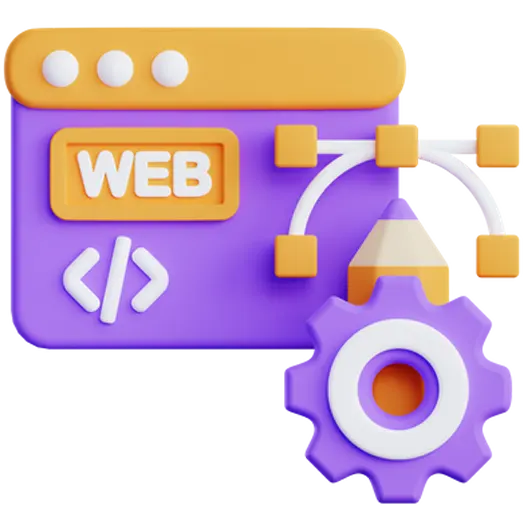
Managing User Access in a Secure Web System: A Comprehensive Guide
In today’s interconnected world, securing your web systems is paramount. One of the most critical aspects of web security is effective user access management. Improperly managed user access can leave your systems vulnerable to data breaches, unauthorized modifications, and other security threats. This article explores the key principles and best practices for managing user access in a secure web system, ensuring your valuable data and resources remain protected.
Table of Contents
- Why User Access Matters
- Authentication and Authorization: The Cornerstones of Access Control
- Best Practices for User Access Management
- The Impact of Digital Transformation on User Access
- Frequently Asked Questions (FAQ)
- Secure Your Web System with Doterb
Why User Access Matters
User access management is the process of controlling who can access your web system and what they can do once they are in. It’s about balancing the need for legitimate users to perform their tasks with the need to protect sensitive information and critical system functions. A robust user access strategy is crucial for maintaining data confidentiality, integrity, and availability.
Authentication and Authorization: The Cornerstones of Access Control
Authentication and authorization are two distinct but complementary processes that form the foundation of effective user access management.
Authentication: Verifying User Identity
Authentication is the process of verifying that a user is who they claim to be. This typically involves the user providing credentials, such as a username and password, which are then checked against a database of known users. Strong authentication mechanisms are essential to prevent unauthorized individuals from gaining access to your system. Implementing multi-factor authentication (MFA) adds an extra layer of security by requiring users to provide multiple forms of identification, such as a password and a code sent to their mobile device.
Authorization: Defining User Permissions
Once a user has been authenticated, authorization determines what resources and actions they are allowed to access. This is where you define the specific permissions for each user or group of users. Authorization controls should be carefully configured to ensure that users only have access to the resources they need to perform their job duties. Implementing the principle of least privilege is key here.
Best Practices for User Access Management
Implementing a comprehensive user access management strategy requires adherence to best practices. Here are some key recommendations:
Role-Based Access Control (RBAC)
Role-Based Access Control (RBAC) is a method of restricting system access to authorized users based on their roles within the organization. Instead of assigning permissions to individual users, permissions are assigned to roles, and users are then assigned to those roles. This simplifies administration and ensures consistency in access control across the organization. For example, a “Marketing Manager” role might have access to website content management and analytics, while a “Customer Support Agent” role might have access to customer records and ticketing systems.
The Principle of Least Privilege
The principle of least privilege dictates that users should only be granted the minimum level of access necessary to perform their job duties. This minimizes the potential damage that can be caused by accidental or malicious actions. Regularly review user permissions and revoke access that is no longer needed.
Strong Passwords and Multi-Factor Authentication (MFA)
Enforce strong password policies that require users to create complex passwords and change them regularly. Implement multi-factor authentication (MFA) to add an extra layer of security. MFA requires users to provide multiple forms of identification, such as a password and a code sent to their mobile device, making it much more difficult for attackers to gain unauthorized access.
Regular Access Reviews and Audits
Conduct regular access reviews and audits to ensure that users have the appropriate level of access and that permissions are aligned with their current job duties. This helps identify and address any potential security vulnerabilities. Automated tools can assist with this process.
Secure Session Management
Implement secure session management techniques to protect user sessions from hijacking and other attacks. This includes using strong session IDs, setting appropriate session timeouts, and implementing mechanisms to prevent cross-site scripting (XSS) attacks.
The Impact of Digital Transformation on User Access
With the rise of cloud computing and remote work, managing user access has become even more complex. “Digital transformation is not an option, it’s a necessity to stay relevant,” and this transformation often involves migrating applications and data to the cloud, which introduces new security challenges. It’s crucial to adopt a zero-trust security model, which assumes that no user or device is trusted by default, regardless of whether they are inside or outside the network perimeter. Investing in robust identity and access management (IAM) solutions is essential for securing your web systems in the digital age.
Frequently Asked Questions (FAQ)
-
Q: What is the biggest risk of poor user access management?
A: The biggest risk is unauthorized access to sensitive data, leading to data breaches, financial losses, and reputational damage.
-
Q: How often should I review user access permissions?
A: User access permissions should be reviewed at least quarterly, or more frequently if there are significant changes to roles or responsibilities within the organization.
-
Q: What are the benefits of using Role-Based Access Control (RBAC)?
A: RBAC simplifies administration, ensures consistency in access control, and reduces the risk of errors.
Secure Your Web System with Doterb
Managing user access is a critical component of web security. By implementing the best practices outlined in this article, you can significantly reduce your risk of data breaches and other security threats. If your business needs assistance implementing robust user access management or requires a secure website or digital system, contact the Doterb team today. We offer comprehensive web development and IT solutions to help you protect your valuable data and resources.
